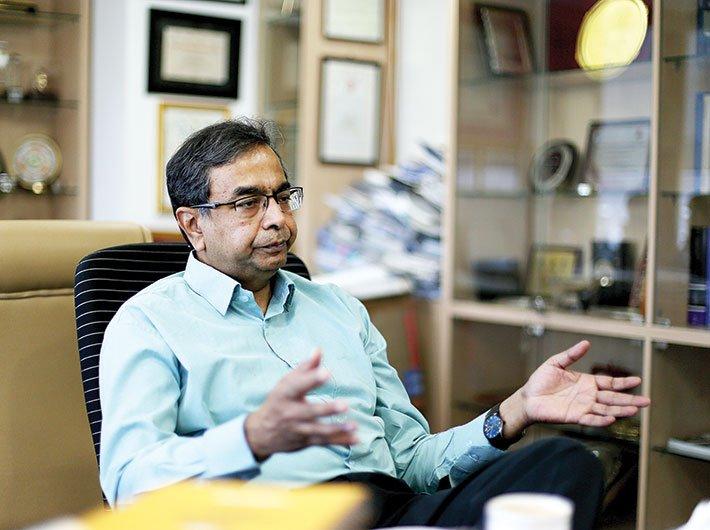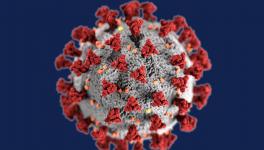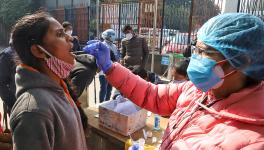Don’t Dread the Future, but Keep Your Mask on: Prof K Srinath Reddy

Image courtesy: Governance Now
A powerful virus that kills most people it infects would quickly run out of human hosts. That, fortunately for humans, is not the path the Novel Coronavirus that causes the Covid-19 disease is on. Yet it also means that the virus has kept changing to survive wherever humans are. This evolutionary fact is the crux of the message many public health professionals, including Prof K Srinath Reddy, president of the Public Health Foundation of India, have been sending to Indians. Rashme Sehgal spoke to Reddy about what it means to ‘live with’ this virus, a recent mathematical model that predicts a Covid-19 wave in summer, why we must take masks and vaccines seriously even though the virus no longer seems as threatening as before, and why the virus appears to behave differently in every country. Edited excerpts.
Is India going to be hit by another Covid wave?
If by a wave we mean a spike in Covid-19 infections sometime in the future, the answer is “yes, very likely”. If we mean a surge of severe cases requiring hospitalisation, intensive care or ending in death, the answer is “most likely not in the next in few months”. Beyond that, it is uncertain to predict but not highly likely.
But there are warnings of another surge. Someone even predicted a date it can be expected to arrive, 22 June. You have said this is a prediction and it can go wrong, but is it not alarming nevertheless?
Even if they sound very precise, mathematical models of Covid-19 wave predictions are not very accurate. The number of susceptible people in a population is difficult to determine in terms of how many are losing their previously acquired immunity and over what time period [this may happen]. Immunity levels cannot be judged by antibody levels only. We know that T-cell immunity is very important. Infections may still occur, but protection from severe illness may be retained even when antibody levels fall. We also cannot predict which type of variant will arise where, when, and with what levels of infectivity, virulence and vaccine evasion capability.
Models do not take into account the nature of variations that may occur in human behaviour and health system responses. While I admire the confidence of those who make such precise predictions, I retain some scepticism about the accuracy of those methods. I may be proved wrong, but I remain doubtful at present.
Should there be apprehensions of a next wave turning out like the Delta wave?
The likelihood of a fresh wave reaching the severity of Delta is not high because many people now have acquired sufficient immunity to protect them against severe illness through prior infection or vaccination. The numbers of infected persons may rise during a fresh wave—if it happens in the next four months—but the number of very sick people will not be high. As for a wave that may come later, its effects will depend on multiple factors like the nature of the variant, the level of immunity in the population linked to fresh vaccine boosters as per government policy and the use of oral anti-viral medicines etc. Persons who have low levels of immunity will still be vulnerable.
In a recent article, you said, “mathematical models have been off the mark”. And yet when experts predicted a Covid-19 surge last February, even the government ignored their warnings.
Some modellers said there would be no second wave. Some said that the virus appears to be hitting a ‘human wall’ of already acquired immunity. No model can claim to have accurately predicted the emergence and impact of Delta in India. I believe the central and state governments, media and the public should not have allowed themselves to be misguided by the assertions of some experts that India had acquired herd immunity by January 2022.
To many people, the sheer unpredictability of the virus is a significant concern. Your views?
Yes, the virus has not been easily predictable because it is creating new variants to continue the existence of its species. While that process is anticipated, the virus is doing it opportunistically, on its own timetable, not on our schedule for its fadeout. However, the logic of evolutionary biology indicates that new variants usually become more infectious but less virulent over time. So, there may be no need to dread the future, even as we must not slacken in our efforts to bolster our defences by building immunity.
Why is the effect of the Omicron variants so varied across countries? The United States has reported a large number of deaths from it, for example, despite high vaccination. Why has that happened?
A third of the United States population is not fully vaccinated. Also, the mRNA vaccines used by the United States have a relatively fast decline of induced immunity. The levels of neutralising antibodies elicited by those vaccines fall sharply after 4-5 months. Many people in the United States are refusing to wear masks. The combination of not getting vaccinated, not wearing a mask and having co-morbidities like hypertension and diabetes creates a ‘perfect storm’ of vulnerability to the virus.
Do we know how many have died due to the Omicron wave that hit India last December?
Data provided by the government indicate 27,118 deaths between 4 January and 14 February, the duration of the Omicron wave. It is in comparison to 1,53,943 deaths in the United States between 1 December 2021 and 18 February 2022. The Omicron wave in India was of a shorter duration.
Can you explain why in China, which has a zero-Covid policy and high vaccination numbers, there was an Omicron variant “outbreak”? [China has reported roughly 5,000 daily cases last week, prompting authorities to go for localised lockdowns.]
A zero-Covid policy is scientifically untenable in an interconnected world: the respiratory virus will creep in at some time. We should aim to keep the number of serious cases and deaths very low, and China has succeeded in that so far. Deaths per million population have been among the lowest in the world. However, by trying to keep the lid tightly shut on all infections (mild or severe), China has created an impossible challenge for itself. The vaccines used in China also appear to have lower efficacy compared with those used in India.
The Omicron variants are highly infectious, though not as fatal as Delta. South Korea reports six lakh cases a day with a highly vaccinated population. Why?
Again, we need to clearly understand that the currently available vaccines do not protect against the virus entering the body if we expose ourselves to it. They stimulate immune defences that fight the virus after it enters the body and prevent severe illness in most persons infected by the virus. That is why South Korea has very few deaths despite a high number of infections. Omicron has greater immune evasion capability than Delta, but vaccinated persons still retain a high level of protection against serious illness.
You have often said the SARS COV-2 virus is here to stay. It is part of our ecosystem. That is an alarming prospect, given a virus keeps mutating unpredictably. How do we cope with this?
The expected path of evolutionary biology is that this respiratory virus will progressively evolve to a more infectious but less virulent form—so that it can continue to co-exist with the human community. Omicron is signalling that the virus is indeed travelling on that path. We are not sure, at this stage, how long it will take to become a stable companion whose behaviour is predictable. There may be some detours along that journey if variants arise that are more virulent than expected because of antigenic shifts or when a virus swaps some genetic material with another virus in the body of an immunosuppressed person or animal. It is unlikely such fusion variants, even if they arise, will last very long if they are very virulent.
There will be strong evolutionary pressure to steer the virus to a level of virulence that does not extinguish its human host population. The virus needs human bodies to replicate itself. Evolutionary pressure will drive it to reach that steady state where it can infect many but not kill most. By when the virus will attain that state, we cannot predict now. Possibly soon. Even when that happens, persons with low immunity levels or high levels of co-morbidity will still be vulnerable to severe disease. So, we must learn to dance with the virus without allowing it to step hard on our toes.
(Rashme Sehgal is a freelance journalist.)
Get the latest reports & analysis with people's perspective on Protests, movements & deep analytical videos, discussions of the current affairs in your Telegram app. Subscribe to NewsClick's Telegram channel & get Real-Time updates on stories, as they get published on our website.
























